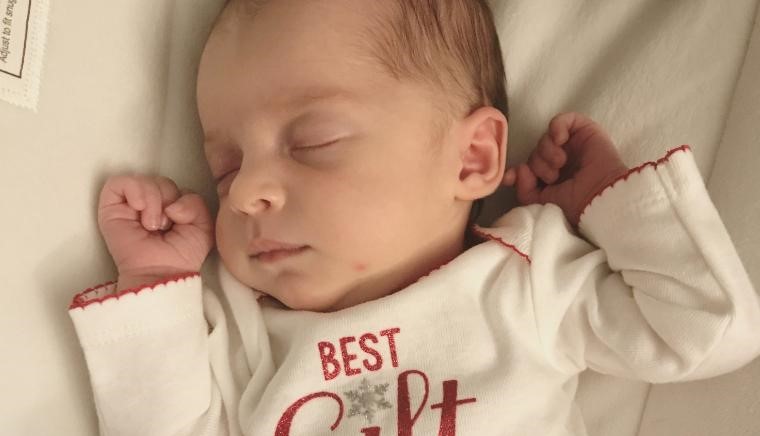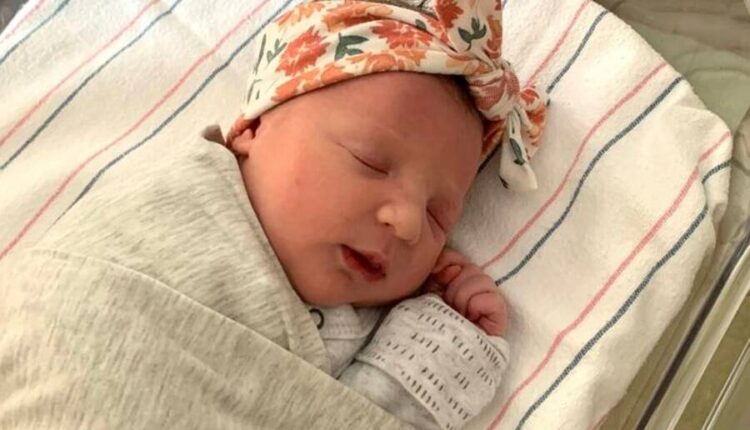An embryo that was frozen in 1992 was implanted into the uterus of a woman earlier this year — and now, that embryo has just successfully been born as a healthy baby girl named Molly Gibson.
The embryo from which Gibson was born is the oldest-known embryo in the world to result in a successful birth.
Gibson’s birth was made possible through the services of the National Embryo Donation Center, a faith-based nonprofit in Knoxville, Tennessee, that stores frozen embryos donated to patients hoping to become pregnant through vitro fertilization (IVF).
Parents who are unable to have children the traditional way, like Molly’s parents Tina and Ben Gibson, are able to “adopt” these unused embryos and have them surgically implanted into the adoptive parent’s uterus.
In this case, the embryo which Molly came from was planted inside Tina’s uterus, which essentially acted as a surrogate womb.
This means that, even though Tina birthed Molly, both her and Ben are technically not the biological parents since neither the egg nor sperm came from them.
The couple decided to give the IVF procedure a try after Ben was diagnosed with cystic fibrosis, which can cause infertility.
They tried to conceive a biological child for five years to no avail.
The couple had fostered multiple children and even considered adoption before they finally sought out the services of the National Embryo Donation Center.
Even more remarkable is that Molly is actually the Gibson’s second child born through adoptive IVF.
Her older sibling, three-year-old Emma, was also born from a frozen embryo in 2017.
What’s more, Molly and Emma came from the same anonymous embryo donors, making them biological siblings.
“With Emma, we were just so smitten to have a baby,” Tina said of their first child. “With Molly, we’re the same way. It’s just kind of funny — here we go again with another world record.”
Before Molly was born, Emma, who came from the same batch of frozen embryos from 1992, was the record-holder for the oldest-known embryo to result in a successful birth.
Indeed, when Tina first found out how long the embryos had been frozen, she admitted that she was skeptical of their viability.
To put things into perspective, Tina herself was born in 1990, just two years before the embryos that she would later birth into children were frozen.
But her two successful births with Emma and Molly are clear indicators that frozen embryos shouldn’t be discarded simply due to their age.
“This definitely reflects on the technology used all those years ago and its ability to preserve the embryos for future use under an indefinite time frame,” said Carol Sommerfelt, the Donation Center’s lab director and embryologist.
But despite the advances in medical technology, births from frozen embryos are still quite complicated and don’t necessarily guarantee a success.
Before the frozen embryos are able to be planted inside the intended uterus, they need to be thawed out, which still yields mixed results.
About 75 percent of all donated embryos survive the thawing and transfer process.
Even then, they may not implant successfully; only between 25 to 30 percent of all embryos implanted through IVF are successful.
Nevertheless, successful procedures can still change lives.
“Every single day, my husband and I talk about it,” Tina said. “We’re always like, ‘Can you believe we have not one little girl, but two little girls? Can you believe we’re parents to multiple children?’” And rewarding feelings can extend beyond the parents, too.
“It is very rewarding for me to see an embryo that was frozen years ago result in the birth of a lovely baby,” Sommerfelt said of Molly’s birth. “I feel honored to be part of the process.”

